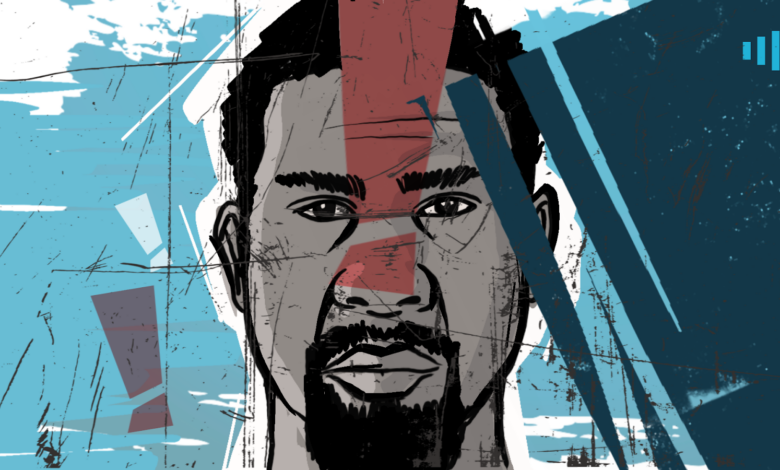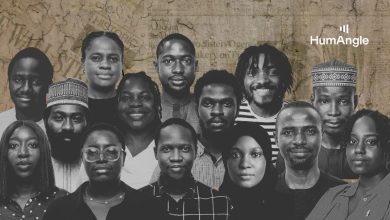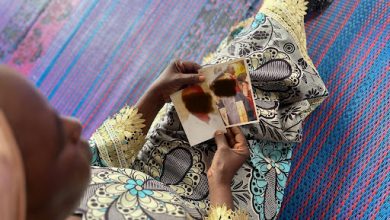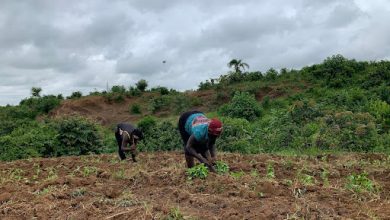One Man’s Struggle with Ankylosing Spondylitis and Its Severe Financial Implications
What started as simple butt pain turned into a life-altering, financially draining chronic disease. With no hope for a cure, this medical practitioner does what he can to survive.

Mahmoud Idris* lives with Ankylosis Spondylitis (AS), a chronic, life-altering inflammatory disease affecting the spine and other joints. The debilitating condition makes drugs essential to his existence.
Experts say AS is an autoimmune form of Rheumatoid arthritis with no cure, affecting men in their early adulthood.
The painful condition is multi-systemic as it affects every system in the body. According to Mahmoud, a medical doctor, the most common symptoms include buttock pain, lower back pain, cervical (neck) pain, stiffness of the entire spine, shoulder joint and knee pains, etc.
Sadly, Mahmoud lives with these symptoms and pays through his nose to manage the disease.
“Non-musculoskeletal symptoms include pain and redness of the eye, fatigue and tiredness, anxiety, insomnia, anorexia, and abdominal breathing. It also affects the cardiovascular system, but alhamdulillah, I’m yet to have such symptoms,” the 34-year-old explained.
He was a great football lover before he first started to notice the symptoms.
“My major interest is football; I used to play a lot until I couldn’t because of my condition. Now, I just watch as many games as I can. I also love travelling and watching movies,” Mahmoud said.
The ailment started as alternating buttock pains. At first, it mostly affected the left part of his buttocks; it would disappear and then return on its own, worsening in the mornings or during colder seasons. But this pain soon extended to the right side.
“I later found out it was buttock pain because it affects the sacroiliac joints first, then later ascend. It started when I was in SS3; I was almost 16 years old, but we didn’t take it seriously. After about a year, I couldn’t ignore it anymore and was placed on a need-basis analgesic. Which was fine at first, but by 2009, I had to take daily analgesics to be able to do anything,” he told HumAngle, noting that without those analgesics, he finds it difficult to sleep, pray or do anything worthwhile.
“I was always in dire pain, be it my neck or lower back, shoulders, hip, and my entire rib cage. I couldn’t afford to laugh, cough or sneeze as they all came with severe pains.”
His experience in the medical world was initially frustrating. Even though he started having symptoms in 2006, he was only able to get a diagnosis in September 2010, after over four years of agony.
He first went to the Federal Medical Center (FMC) in Taraba State for diagnosis and later proceeded to the University of Maiduguri Teaching Hospital (UMTH), Borno State. But no one could say exactly what was wrong with him. For four years, he dealt with several misdiagnoses and uncertainties.
A certain doctor once accused him of being a liar, asking his father how a 17-year-old would claim he had severe back pains. The doctor thought Mahmoud didn’t want to go back to school and was only using a non-existent ailment as an excuse. “That affected me negatively as I just stopped complaining about it to my parents and resorted to abusing analgesics to get myself a much-needed relief,” he recalled.

He was eventually referred to see a rheumatologist by an orthopaedic surgeon, whom he considers to be his saviour. Past doctors had given him analgesics and sent him home without referring him to a specialist.
“I made calls across northern states and found out that there is a Rheumatologist in Kano, the only one in Northern Nigeria as of then. I got to see him during one of his clinic days, and he diagnosed me within the first 5 minutes of our interaction. When I returned home and googled the condition, it was like I was the one who described my symptoms to the online author. It was a perfect fit. I slept better that day for the first time in probably over a year. It was a huge relief.”
Mahmoud was placed on some medications, including an analgesic, for when he feels pain. He was on the prescribed medication for over two years, but his condition started to worsen. He was later prescribed a Rituximab infusion that cost him a lot of money. It gave him significant relief for two months, but the symptoms gradually returned, even more severe than they used to be.
After travelling to India in 2013, he seemingly got a better solution. He had the same diagnosis in the country but was placed on some new medications, such as “biologics”. The prescription was for life, as they informed him that his condition could be managed but not cured. He had been on the medications since May 2013 – a weekly injection given subcutaneously. However, he can only take the injections every two weeks as his income is insufficient to buy the weekly dose he needs.
“Exercise is an important component of the treatment. However, I’m usually unable to do them as I’m rarely pain-free. Taking a very hot shower helps relieve the stiffness for about an hour. And they also say that swimming is the best exercise for it. Unfortunately, I’m yet to learn,” he said, worrying about other conditions that could arise, such as the risk of losing sight.
“I’ve had several episodes of Uveitis. Being in the medical field has helped me manage it so far. I met another patient who went blind from this condition as doctors failed to diagnose his Uveitis early and treat it. He eventually died a few years later,” he said.
Conditions such as gut disease, skin disease, uveitis, and eye disease can also be triggered by AS, according to experts.
Coping with the school before he started the biological treatment was difficult. Sitting for long was an issue, and so was walking within the campus to the lecture venue. But due to his medications, he was able to work as well as those without any chronic disease, sometimes even better than them. However, when he gets stressed, it causes a flare-up in his symptoms, and he would need to be on other anti-inflammatory drugs for some days.
Since falling sick, Mahmoud’s life has seen many hard changes, such as his inability to do the one thing that he loved doing most as a child and teenager: football. He can’t run as he used to do and currently walks with a limp, which he believes is due to an affectation of the sacroiliac joints.
“It gave me a bad posture as I’m now kyphotic. Stooping forward brings some relief, and over time, it became my default posture. I walk with a forward tilt of the head due to the reduced range of motion in the cervical spine,” he said.
But one of the biggest impacts his condition has had on him was on his mental health, especially between 2003 and 2013 before he started his current treatment. The National Institute of Mental Health has noted that chronically ill people are at a higher risk of developing mental health conditions like depression, usually triggered by anxiety, stress, brain changes, medications, a family history of depression, and other challenges common to them.
Mahmoud is also painfully conscious of how this condition affects his loved ones; their worries make him more anxious.
“Daily questions like ‘How is your body today?’ from closed ones become irritating despite knowing they have my best interest at heart. I have prayed to God to take my life on several occasions because of how painful it was to live. If I say the thought of suicide hadn’t crossed my mind before I started the treatment with the biologic, I would be lying. It probably would’ve been a different story if my religion didn’t frown at it,” he told HumAngle.
One of the causes of his mental stress was how his condition was handled by his family, who believed it was spiritual. His relatives had imagined that his ailment was a result of a djinn attack from someone else, forcing him to take traditional medicines. As a medical student, he knew better than to trust those alternative treatments, but they refused to budge.
Using spiritual treatment options as a remedy for health issues is not just common in rural areas or the urban demographic in the county. Many educated Nigerians also seek miracle cures, leading to devastating consequences, according to a report by Nigerian media.
In 2012, at the peak of his depression and pain, he gave in because he wasn’t getting any relief from the hospital. “I was fed up with the world and secretly hoped the drugs would knock up my kidneys or liver so I would die and finally rest,” he added.
He continued using the drugs for about six weeks, but nothing changed. He discarded them and went back to school. His mother and uncles were not happy with that development, and they stopped forcing him. It took the trip to India for his mother to finally see the disease for what it was, 12 years after his symptoms started.
“This was when she saw foreign nationals that walked like me and had the AS posture. Going against my family, especially my mum, during that period was difficult,” he said.
Financial strain
Mahmoud says he has a lot to be grateful for despite the challenges his conditions have caused him. Even though he can only afford half the dose, he is grateful that he gets even that.
“The major issue is that getting those drugs became my priority. I always need to have enough for my next order. That’s all I planned for and cared about for several years. The paranoia sets in when you have only one injection left, knowing you have to cough up that money to buy again.”
While his friends and relatives have the luxury of investing, going for religious pilgrimages, or buying houses, all he can afford to care about is to have food on the table and get the next shot. The shots have become a means of survival, allowing him to perform everyday activities easily.
“I have met 2 or 3 patients that can’t afford even a single dose of the medication. Their spine is completely fused, and they find it hard to carry out basic daily activities,’’ he said. As of August this year, the medication increased from ₦350,000 to ₦700,000 due to inflation.
From 2021 to 2023, IQVIA, a global firm helping healthcare customers through innovation, technology and clinical research services, subsidised drug purchases for some patients, including Mahmoud, but the scheme has now come to an end. The discount was up to 50 per cent, earning patients an extra pack for every pack they could afford.
“I need 12 packs in a year, but if I was only able to buy four or three packs in a year, they would give me an extra four or three packs, as the case may be,” he said. Sometimes, when he goes a long time without his medications, mostly at the beginning of the second week, people start staring at him because of his posture while standing.
“It used to bother me in the beginning, but I’m used to it now and don’t care. Other implications include trying to avoid travelling with commercial cars or paying for double seats when I have to, as I easily get tired of sitting in one position and have to keep adjusting. This leads to increased financial cost.”
Mahmoud’s hope for the future is for increased awareness about this disease, especially among non-specialist doctors, so they can easily diagnose the disease early or refer to the appropriate specialist for timely intervention. Most times, patients are only diagnosed after they develop an already fused spine or other complications,” he said.
“Another important prayer of mine is for the government to come to the aid of people living with the disease by providing the treatment through insurance or subsidising it for them to afford. Since the treatment is expensive, this will help the individual to work and also be productive in the society.”
Mahmoud Idris, who suffers from Ankylosis Spondylitis (AS), a debilitating autoimmune disease affecting his spine, recounts the struggles of diagnosis and costly treatments.
Despite starting symptoms at 16 and facing years of misdiagnoses, he was finally correctly diagnosed after a visit to a rheumatologist.
His condition forced him to give up activities like playing football, and financial strain from the required medication is a significant challenge, as costs can reach up to ₦700,000 annually.
Mahmoud’s condition affects his daily life, creating not only physical but mental health challenges.
Despite these, he maintains hope for increased awareness and financial support for managing AS, advocating for better diagnosis and government-subsidized treatments. His story highlights the broader implications of chronic illnesses, especially the need for early intervention and support systems for affected individuals.
Support Our Journalism
There are millions of ordinary people affected by conflict in Africa whose stories are missing in the mainstream media. HumAngle is determined to tell those challenging and under-reported stories, hoping that the people impacted by these conflicts will find the safety and security they deserve.
To ensure that we continue to provide public service coverage, we have a small favour to ask you. We want you to be part of our journalistic endeavour by contributing a token to us.
Your donation will further promote a robust, free, and independent media.
Donate HereStay Closer To The Stories That Matter




